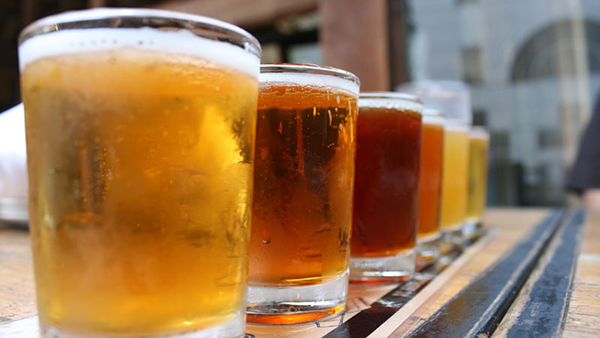Drink
How Does Your Body Break Down Alcohol?
You should thank your liver every day. After all, this organ is the reason behind your body’s continual fight against your binge drinking. Liver, which is also responsible for various other function in your body, accounts for the elimination of nearly 90 percent of alcohol that you drink.
Liver’s Function
According to researchers, the liver is the sole reason behind 90% of alcohol elimination from the body with kidneys, sweat glands, and lungs taking up the rest of the 10%. The alcohol is converted into a number of substances by the liver and further break down into carbon dioxide and water. There is no truth to the findings that liver breaks down the alcohol into sugar. The liver is only responsible for the detoxification process, which turns up as a high priority for your body.
How Fast?
So, how fast does your body actually break down the alcohol. Dr. Ravinder Pal Singh, Directors of Centre for Liver Transplant and Gastro sciences explains, “As a standard rule, a person can eliminate one average drink of 5 oz (15 ml) of alcohol per hour. However, there are several other factors that influence this rate.” Dr. Sanjay Singh Negi, Director of HPB Surgery and Liver Transplant further explains, “Alcohol is generally cleared from the body at the rate of 15 ml per hour. So if a person consumes 30 ml (one small peg) of alcohol, it is cleared in around one-two hours. Beer (350 ml) will be cleared in two-three hours.”
What Is The Process?
Once alcohol enters our blood stream, it is quickly absorbed by several organs in our body. Since the alcohol molecules are extremely tiny, they tend to dissolve very quickly in water and fat, which are two of the main components that make up our body.
The absorption of alcohol can be explained with three stages. In the first stage, alcohol is absorbed. In the second stage, the alcohol is distributed throughout our body in a way that the blood in our body carries the same amount of alcohol in its streams. The third stage is the crucial stage and where the liver plays a big role. The liver, which contains an enzyme called dehydrogenase converts the alcohol into acetaldehyde. Further conversion of acetaldehyde to acetic acid is carried out by ADH, Aldehyde Dehydrogenase. The final conversion takes place which transforms the acetic acid to CO2 and water, which is then excreted from your system.
Facts About Drinking
1. Women absorb and metabolise alcohol differently and are more susceptible to alcoholic liver diseases.
2. People with diabetes should supplement their drinking with lots of food as drinking alcohol puts people at a higher risk for low blood glucose
3. Drinking on an empty stomach causes higher absorption rate in people
4. Recommended limits of drinking is set at 3 drinks per week for men and 2 drinks per week for women.






















